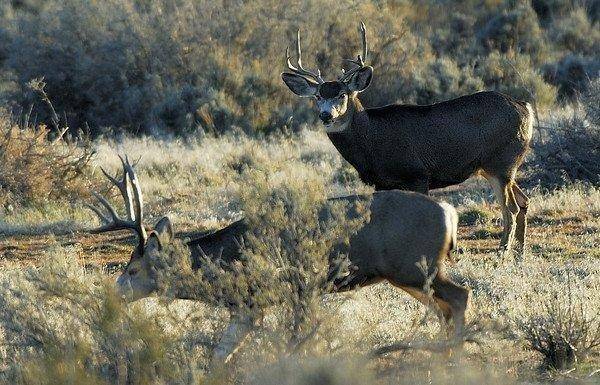If you spend time in the outdoors, there’s a good chance you’ll eventually come across a wild animal that’s sick.
If you find a wild animal or bird that’s sick, what should you do?
В
Boyde Blackwell, regional supervisor for the Division of Wildlife Resources, says if a wild animal looks sick, it’s best not to touch it or even go near it.
“Folks should call us [the DWR] right away,” he says.
Blackwell talks about a recent incident in northeastern Utah in which a group of people found a sick deer fawn and brought it home with them. “As you can imagine,” he says, “they had the animal around their family and friends. This had the potential to be a serious situation. Fortunately, the fawn didn’t have a disease that was infectious.”
The results weren’t so benign a few weeks prior to that.
A DWR conservation officer in northeastern Utah responded to a call about a sick deer. As part of his investigation, he collected tissue samples that the DWR sent to the Utah Veterinary Diagnostic Laboratory in Logan.
Lab workers determined that the animal was infected with plague, a rare bacterial disease that killed millions of people in the Middle Ages.
“Fortunately,” Blackwell says,” the officer was the only person who was exposed to the deer. The person who noticed the sick deer kept their distance from it and called us. Our officer then followed proper procedures in handling the deer, which limited his exposure to whatever was making the deer sick.”
Blackwell says when the lab results came back, the officer was quickly treated as a preventative measure. “I’m just glad this incident was limited to one person,” Blackwell says.
Leslie McFarlane, wildlife disease coordinator for the DWR, says plague is extremely rare in deer. She says very few cases have ever been documented or confirmed. “The bacterial disease is known to cycle around the western United States, mostly in small mammal populations,” she says. “But it’s fairly rare, even in small mammals.”
McFarlane says that in addition to plague, there are many other diseases, such as rabies or tularemia, that wild animals can carry and pass on to people.
“For these reasons,” she says, “we ask people to be cautious and to report wild animals that are behaving oddly or appear to be sick.
“It’s best to leave the wild animal where it is and report it to the Division of Wildlife Resources as soon as possible.”
Bats
Bats are among the dead or sick wildlife species that people find most often in Utah. And that isn’t good. McFarlane says bats are the primary carrier of rabies in Utah.
“About two to five bats that are found in Utah each year test positive for rabies,” she says. “Please keep in mind that this is a very small number compared to the actual number of bats that call Utah home.”
If you see a bat that’s behaving unusually, such as flying during the day, or you find a bat inside your house, or you think one may have come in contact with a child or one of your pets, please call the nearest DWR office immediately.
McFarlane says it’s common for cats to capture or chase bats, especially at night. “We encourage you to keep your cat’s rabies vaccinations up to date,” she says. “Keeping its vaccinations up to date might be the difference between enjoying your pet for years to come or having to put it down because it contracted rabies.”

